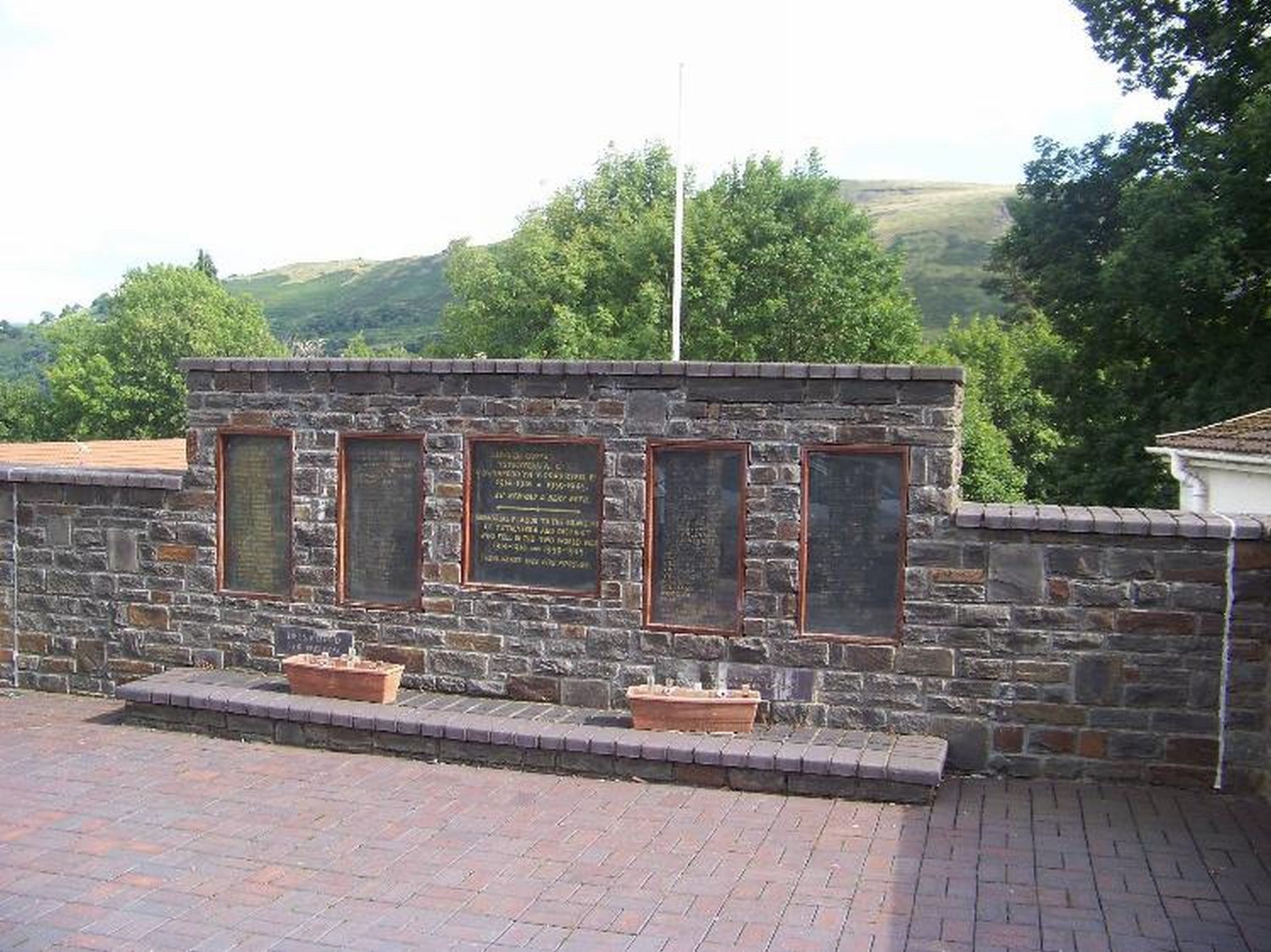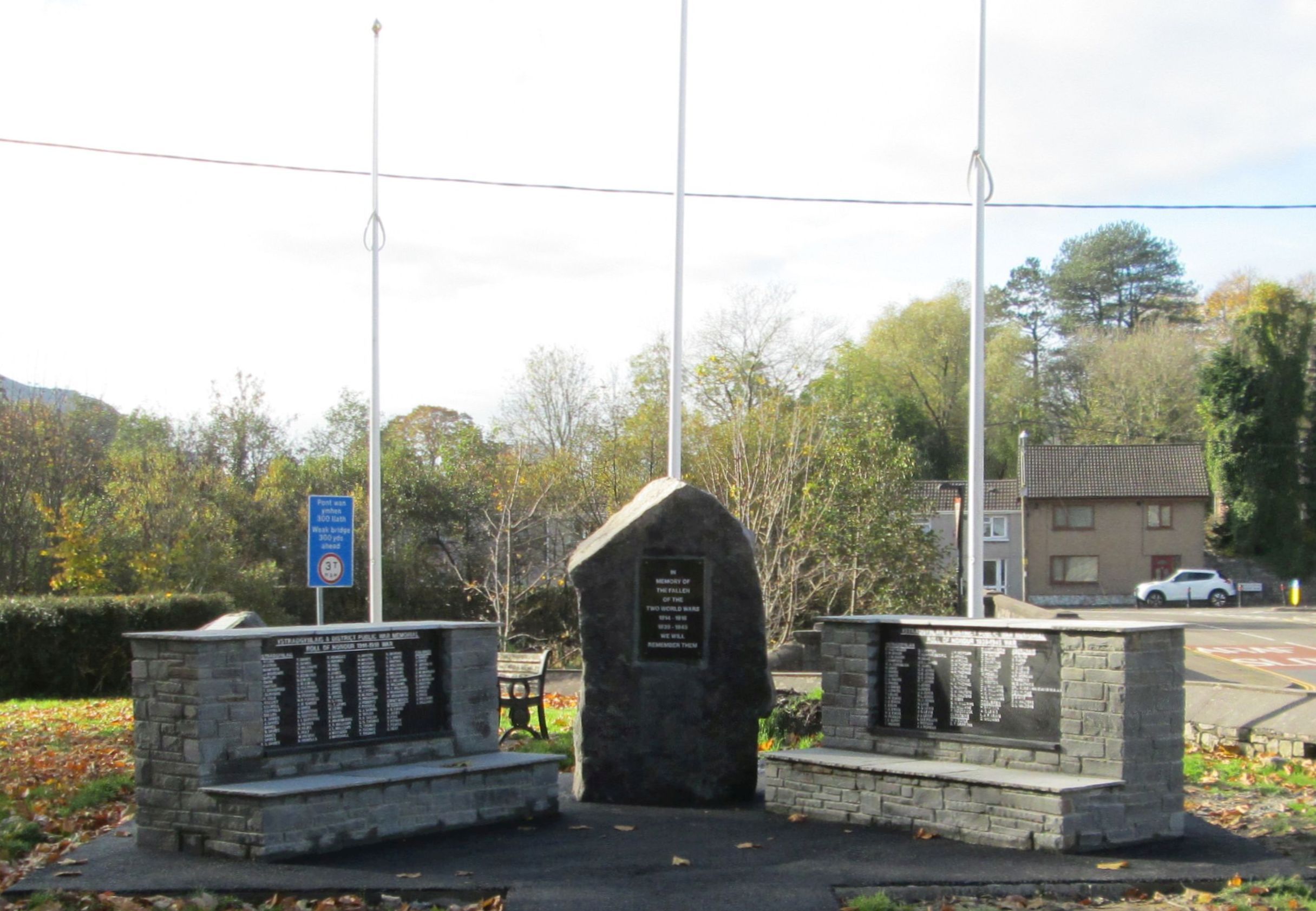Ystalyfera Fallen
War Graves & Remembrance Graves
War and Remembrance by Val Trevallion
Major General Sir Fabian Arthur Goulstone Ware KCVO, KBE, CB, CMG (1869-1949) was the founder of the Imperial War Graves Commission, now the Commonwealth War Graves Commission. Too old for military service himself he was nevertheless very concerned that, after the war, relatives of the fallen would not know the final resting place of their loved ones. Today each serviceman is commemorated by a name on a headstone or on a memorial.
The unknown dead were also given headstones bearing the simple words 'A soldier of the Great War. Known to God'. Thousands of these graves are to be found scattered throughout the cemeteries of at least 75 countries.
As if the arrival of that letter from the War Office was not enough, countless families often then had the extra burden of not having a body to bury. From the inscriptions found on many family graves throughout this country, one can only imagine how difficult it was to come to terms with a death and yet not have the loved one near.
Inscriptions from two family graves who had lost serving soldiers
IN THE FIELD OF BATTLE HE BRAVELY TOOK HIS PLACE
AND FOUGHT AND DIED FOR ENGLAND
AND THE HONOUR OF HIS RACE
HE SLEEPS NOT IN HIS NATIVE LAND
BUT NEATH A FOREIGN SKY
FAR FROM THOSES WHO LOVED HIM BEST
IN A HERO'S GRAVE HE LIES.
OH HAD I GOT ONE LAST FOND LOOK
INTO YOUR LOVING FACE
OH HAD I ONLY HAD THE CHANCE
TO KNEEL DOWN AT THAT PLACE
TO HOLD YOUR HAND MY DEAREST SON
BEFORE YOU PASSED AWAY.
Perhaps as a focus for mourning and remembrance the names of relatives appear to be added not only as a mark of remembrance with in the immediate family but to serve also as a reminder to others of the supreme sacrifice that person made for his country. Men and women who died at home and in military hospitals of wounds, sickness and disease, or in training accidents and air raids are often found in family graves and may not always have been commemorated on the local war memorial.
Then as times change, families move away, churches and chapels are closed and the cemeteries become overgrown. The CWGC has a record of war graves and this affords them with a special protected status. The graves are cleaned and repaired, even if third parties maintain them, as is often the norm in the United Kingdom. However, when the family or supporting religious community can no longer maintain the gravesite it is not only those once cherished words engraved on headstones that are to be lost. In many cases these provide the historian with the only link to data relating to a fallen serviceman, as along side his/her name are often the rank regiment theatre of war and of course date they fell and whether one agrees with war or not, those of us who were killed doing their duty deserve the respect of being memorialised.
Val Trevallion and Jon Davies of Grey Wolf Web Design also wrote an article that was published in the November 2011 edition of the Community Magazine. A slightly edited version of the article on remembering the fallen of the district, can be read by clicking here.
Ystalyfera - South Wales

Email Yeargroup:
yeargroup@hotmail.co.uk
Email Grey Wolf Web Design:
webdesign@wolfianpress.com

Click the cover to purchase the paperback
Simone dreamed of becoming a showbusiness star during her nights in the air raid shelter in the garden of her home in Southall, during World War Two. After joining the A.T.S. in the war, she became part of the concert party entertaining the troops, eventually joining the Windmill Theatre.



